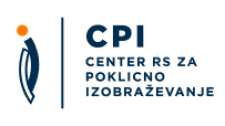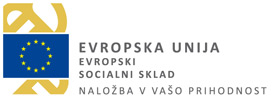Primary tabs
Tehnik računalništva/tehnica računalništva
Selected qualifications
| Name of qualification | Name of qualification: Tehnik računalništva/tehnica računalništvaAdd to comparison |
|---|---|
| Translated title (no legal status) | Translated title: Computer technician |
| Type of qualification | Type of qualification: Upper secondary technical education |
| Category of qualification | Category of qualification: Educational Qualification |
| Type of education | Type of education: Upper secondary technical education |
| Duration |
Duration of education:
4 years
|
| Credits | Credits: 240 credits |
| Admission requirements |
Entry conditions:
|
| ISCED field |
Field:
Information and Communication Technologies (ICTs)
|
| ISCED subfield | subfield: software and applications development and analysis |
| Qualification level |
SQF Level:
SQF 5 |
A certificate holder is qualified to:
- read, plan, draft, monitor and amend technical documentation in accordance with the prescribed rules for ICT use,
- apply concepts regarding the organisation of work and economics in a technical field,
- program simple applications on programmable devices, and programme, install and wire programmable relays,
- make required settings to an operating system and provide basic user support for the use of software,
- assemble, maintain and service hardware, and rectify faults,
- wire various types of electrical and communication installations, connect users and perform basic maintenance tasks,
- connect elements of electrical installations in switchboards, distribution and connecting devices, and select and switch electrical protections, and
- establish, maintain, protect and ensure the restoration of network services.
Elective:
- record, archive and present sound, pictures and video in digital format,
- prepare photographs and videos in terms of design,
- provide advice in the use of electronic certificates and signatures,
- protect information and communication systems against intrusions and harmful programmes,
- install and manage systems and user software,
- work with users, suppliers and clients,
- plan the development of simpler programmes,
- produce and test minor elements of major programmes,
- archive and restore databases, create complex inquiries,
- write server procedures and triggers for the introduction of business rules and exception handling,
- use digital photography devices,
- design websites and other documents for electronic media,
- plan and program microprocessor boards,
- control, capture and regulate microprocessor boards,
- manage hardware and software for filming, editing and showing AV content,
- use computer formats to record text, graphics, video, sound and other media content,
- manufacture and maintain simple pneumatic, electro-pneumatic and hydraulic controls, and
- program, install, start up, monitor and control the functioning and measurement of and rectify faults in simple, automated multi-device units.
Students may progress to a higher year if at the end of the academic year they achieve a positive assessment in all general education subjects and relevant vocational modules set out in the school’s operational curriculum, and have completed all extracurricular activities and practical on-the-job training, or progress on the basis of a programme faculty decision.
Tehnik računalništva/tehnica računalništva
SQF 5
EQF 4
The Career path tab shows the possible career path within the selected qualification area, which is not the only one and is not mandatory. The actual transition between qualifications, which is determined by law, is defined in the Transition tab.
SQF 6 / EQF 5
Matura/vocational course, higher vocational education (SQF level 6), professional higher education (SQF level 7) and academic higher education (SQF level 7)
Students must successfully (i.e. with positive scores) complete general education subjects, compulsory and elective vocational modules, and the open part of the curriculum. They must also complete extracurricular activities, practical on-the-job training and a vocational matura.
A vocational matura comprises a compulsory section (written and oral examination of Slovene and computer science) and a selective section (written and oral foreign language or mathematics examination, and product/service and an oral presentation).
Vocational and technical secondary schools and adult education institutions.
URL
Awarding body URL:Upcoming event
International Conference: 10 years of Slovenian Qualifications Framework
International Conference: 10 years of Slovenian Qualifications Framework Brdo Congress Centre, Predoslje 39, 4000...
© Center RS za poklicno izobraževanje, 2018. All rights reserved
Sitemap General legal notice Cookie Policy Production: ENKI






